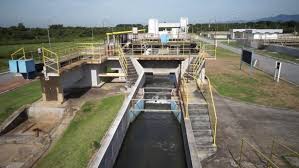The amount and type of water discharged to an onsite sewage treatment system is one of the factors used in sizing that system.
If the volume is high each unit is to be of big size so as to contain it and if the type of water is such that contains enough of solids both metals and non-metals etc, then the units have to be provided to handle them well before they enter other units of the treatment plant.
Other factors that influence sizing include soil properties such as texture, structure, and percolation rate. These are of necessity because they determine the rate of flow of the said waste-water.
Designing a waste-water treatment system based upon average daily flow would imply that the system is operating beyond its design capacity 50 percent of the time. For this reason, treatment systems are typically designed to produce the required effluent quality when treating the maximum daily flow.
Read Also: Meaning and Concepts of Design of Waste-water Treatment Units

The rate of use of the system is another factor. This is influenced by the population of the users. If there are more people to be provided for or it is expected to be high later, then each unit is to be of big size to accommodate the waste-water.
It is because of this that we have flow Equalization and its processes as one of the methods of handling the above situation. Availability of fund and land space also affects the design of waste-water treatment units.
If fund is highly available, then quality materials of big sizes and efficient performance will be provided. Equally if there is enough land space provided, then there could be adequate spacing between one unit and another for effective performance of the system.
Read Also: The Secrets of Sweet Pineapple: From Juicy Delights to Symbolic Meanings

